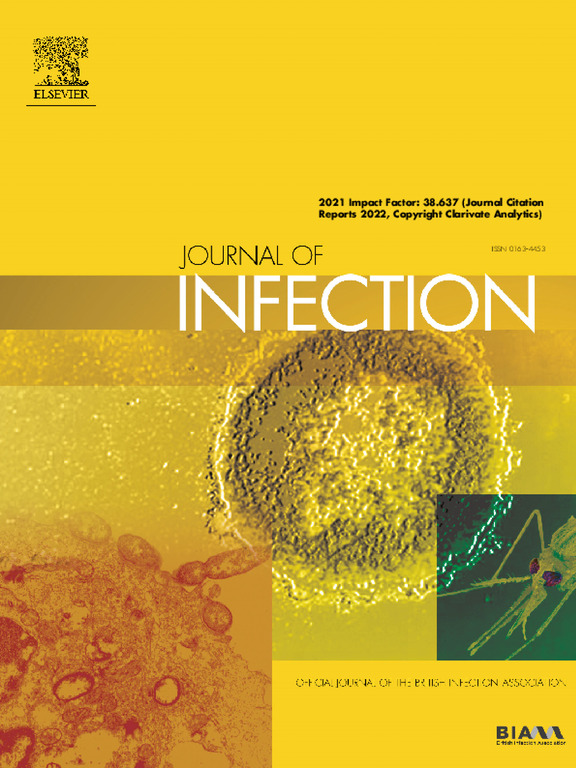在既往存在合并症的人群中,疫苗接种状况导致的covid -19后多病发病率:一项基于人群的队列研究
IF 11.9
1区 医学
Q1 INFECTIOUS DISEASES
引用次数: 0
摘要
背景:COVID-19的长期健康后果,特别是对已有慢性疾病患者的长期健康后果尚不完全清楚。本研究调查了SARS-CoV-2感染是否会增加发生多种疾病(≥2种慢性疾病)的风险,并评估了疫苗接种的保护作用。方法我们分析了香港全区的电子健康记录,将医院管理局的数据与卫生署的COVID-19感染和疫苗接种记录联系起来。一项回顾性匹配队列研究在已有一种慢性疾病的患者中进行。参与者被分为三组:(1)无COVID-19感染记录,(2)COVID-19感染不完全疫苗接种(<;3剂),(3)COVID-19感染完全疫苗接种(≥3剂)。主要结果是预先指定的列表中第二种慢性疾病的发生率。结果在1,038,175名符合条件的个体中,68,975名(6.64%)在192天的中位随访(IQR: 96-313)中出现多病。非covid -19组(51288例)的发病率为每1000人年68.88例(95% CI: 68.18-69.37)。相比之下,COVID-19/未接种疫苗组(9455例)的发生率明显更高(86.58例;95% CI: 84.85-88.35)。COVID-19/疫苗接种组(8232例)的发生率较低(72.84例;95% CI: 71.27-74.43)。与非covid -19组相比,未接种疫苗的校正发病率比为1.26 (95% CI: 1.23-1.29),接种疫苗的个体为1.08 (95% CI: 1.05-1.11)。结果在不同年龄、性别和合并症亚组中保持一致。covid -19感染与已有疾病患者多重发病风险增加有关。全面疫苗接种大大降低了这种风险,突出了其在减轻感染后并发症方面的关键作用。本文章由计算机程序翻译,如有差异,请以英文原文为准。
Post-COVID-19 multimorbidity incidence by prior vaccination status in people with a pre-existing comorbidity: A population-based cohort study
Background
Long-term health consequences of COVID-19, particularly among individuals with pre-existing chronic diseases, are not fully understood. This study investigates whether SARS-CoV-2 infection increases the risk of developing multimorbidity (≥2 chronic conditions) and evaluates protective effects of vaccination.
Methods
We analyzed territory-wide electronic health records from Hong Kong, linking Hospital Authority data with COVID-19 infection and vaccination records from the Department of Health. A retrospective matched-cohort study was conducted among patients with one pre-existing chronic condition. Participants were stratified into three groups: (1) no documented COVID-19 infection, (2) COVID-19 infection with incomplete vaccination (<3 doses), and (3) COVID-19 infection with full vaccination (≥3 doses). The primary outcome was the incidence of a second chronic condition from a pre-specified list.
Results
Among 1,038,175 eligible individuals, 68,975 (6.64%) developed multimorbidity over a median follow-up of 192 days (IQR: 96–313). The non-COVID-19 group (51,288 cases) had an incidence rate of 68.88 per 1000 person-years (95% CI: 68.18–69.37). In contrast, the COVID-19/unvaccinated group (9455 cases) exhibited a significantly higher rate (86.58; 95% CI: 84.85–88.35). The COVID-19/vaccinated group (8232 cases) showed a moderated rate (72.84; 95% CI: 71.27–74.43). Adjusted incidence rate ratios were 1.26 (95% CI: 1.23–1.29) for unvaccinated and 1.08 (95% CI: 1.05–1.11) for vaccinated individuals compared to the non-COVID-19 group. Results remained consistent across age, sex, and comorbidity subgroups.
Interpretation
COVID-19 infection is associated with an increased risk of multimorbidity in patients with pre-existing conditions. Full vaccination attenuates this risk substantially, highlighting its critical role in mitigating post-infection complications.
求助全文
通过发布文献求助,成功后即可免费获取论文全文。
去求助
来源期刊

Journal of Infection
医学-传染病学
CiteScore
45.90
自引率
3.20%
发文量
475
审稿时长
16 days
期刊介绍:
The Journal of Infection publishes original papers on all aspects of infection - clinical, microbiological and epidemiological. The Journal seeks to bring together knowledge from all specialties involved in infection research and clinical practice, and present the best work in the ever-changing field of infection.
Each issue brings you Editorials that describe current or controversial topics of interest, high quality Reviews to keep you in touch with the latest developments in specific fields of interest, an Epidemiology section reporting studies in the hospital and the general community, and a lively correspondence section.
 求助内容:
求助内容: 应助结果提醒方式:
应助结果提醒方式:


